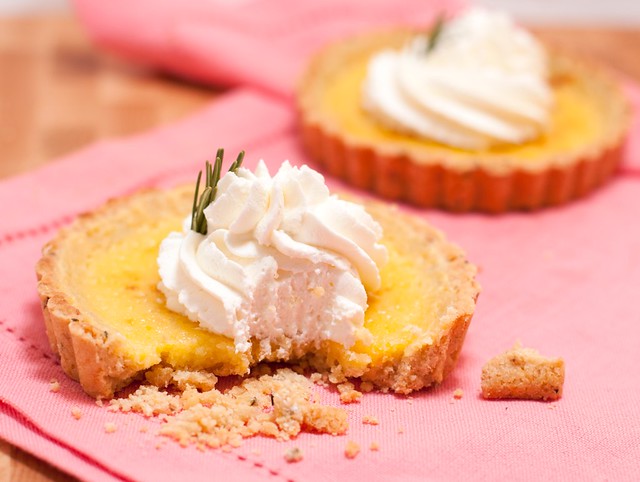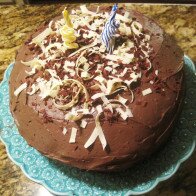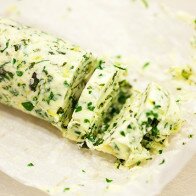Thomas Keller’s Lemon Sabayon Tarts with Rosemary and Honey-Mascarpone Whipped Cream

So remember when I said a few weeks ago that I was going to share the dessert that I made for Mikey’s parents’ dinner party? Well here it finally is! The reason it took so long is that last time I had no time to photograph the tarts before I handed them over to Amy, Mikey’s mom, for her party. So, on Monday, while I had no class due to President’s Day, I went over to his parents’ home and Amy and I made them again!
These tarts are tasty and unique, and a wonderful finish to any meal. The best part is that the tartness and freshness from the lemons make them a lot lighter than a chocolate or ice cream dessert. The filling is creamy and smooth, and the pine nuts and rosemary in the crust add a nice earthiness. The honey-mascarpone whipped cream cuts the sourness from the citrus and ties the entire dessert together, leaving you with a dessert that looks and tastes far more sophisticated than it really is ;).
This dessert is fairly easy to make, but, you need to be ready for a workout because you will have to whisk continuously for a good 10-15 minutes. Having to do this twice in one day left my arm feeling like I just lifted weights at the gym! However, the whisking is the only truly difficult part of the recipe, and even that doesn’t take any special skill.
I think that it would be fun to experiment with different nuts and herbs in the crust and different citrus in the filling. For instance, a brazil nut and maybe mint crust with a blood orange filling, or keep the pine nut crust and add in grapefruit as the filling! Adding cocoa powder into the crust might even be an interesting alteration.
If you have any extra sabayon, it is positively delectable served over fresh berries!
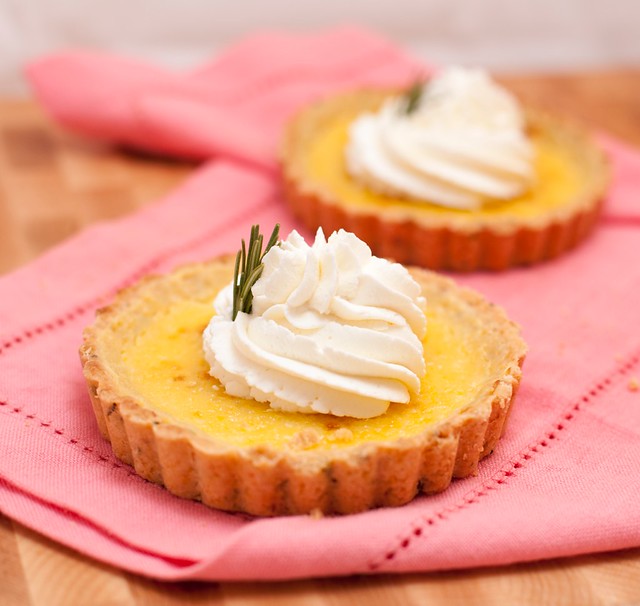
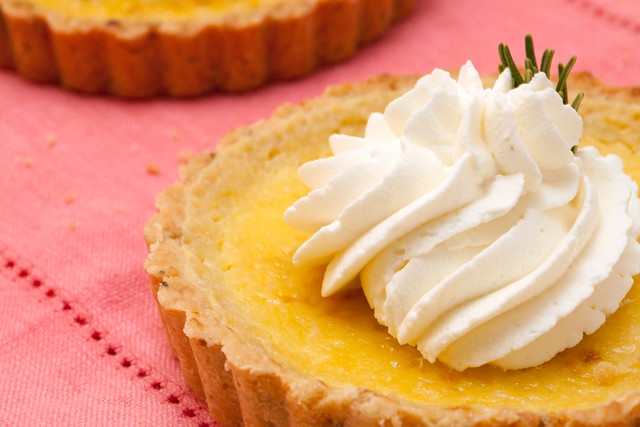
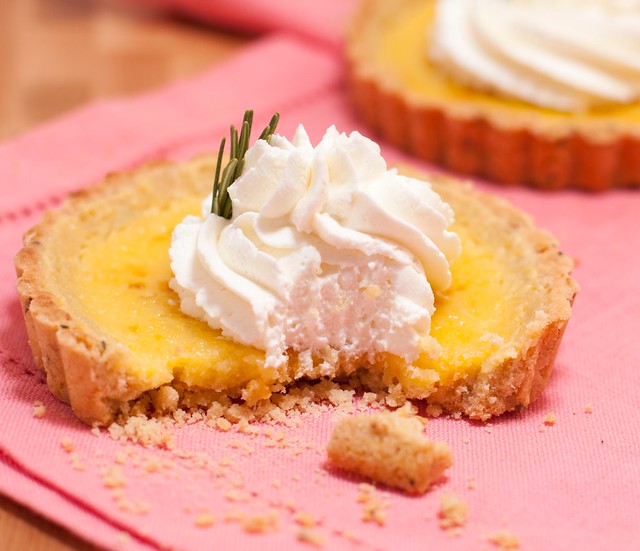
- 10 ounces (2 cups) toasted pine nuts (you simply must toast them; it makes all the difference)
- 3 sprigs fresh rosemary
- 1/3 cup granulated sugar
- 1 lb (3 cups) all-purpose flour
- 1 tsp sea salt
- 8 ounces (2 sticks) unsalted butter, at room temperature
- 1 large egg
- 1 tsp pure vanilla extract
- Place the pine nuts in a food processor and pulse a few times. Add in the sugar, rosemary leaves, salt, and flour and continue to pulse until the nuts are finely ground.
- Transfer the mixture to the bowl of an electric mixer fitted with the paddle attachment. Add in the butter, egg, and vanilla extract and mix to incorporate.
- Divide the dough into three equal parts. Wrap each piece in plastic wrap and refrigerate for at least 10 minutes before using. (You can freeze any extra dough for up to a month.)
- 2 large eggs, cold
- 2 large egg yolks, cold
- 3/4 cup sugar
- 1/2 cup fresh lemon juice
- 1-2 tbsp fresh lemon zest
- 6 tbsp unsalted butter, cold and cut into 6 pieces
- Preheat the oven to 350 degrees. Butter and flour (I only buttered and it worked great) a 9-inch fluted tart pan (or rectangular equivalent- or many smaller tart pans) and refrigerate it while the oven preheats.
- Remove the tart pan from the fridge. Using your fingers, press the chilled dough into the tart pan(s), and up the sides.
- Bake the crust for 10 to 15 minutes, then rotate it and bake for 10-15 minutes more until evenly golden-brown. Remove the crust from the oven and let it cool while you make the sabayon filling.
- Bring about 1 1/2 inches of water to a oil in a pot that is slightly smaller than the diameter of the bowl you will be making your sabayon in.
- In a large metal or glass bowl, whisk together the eggs, yolks, and sugar for about a minute until the mixture is smooth. In a measuring cup, combine the lemon juice and zest; set aside.
- Set the bowl over the pot, creating a double boiler, and whisk the mixture vigorously. After about 2 1/2 minutes, when the eggs are foamy and have thickened, add 1/3 of the lemon juice. Continue to whisk vigorously, and after another 2 1/2 minutes when the mixture has thickened again add another 1/3 of the lemon juice. Again whisk for another 2 1/2 minutes and then add the final 1/3 of lemon juice. Whisk for 2-3 minutes until the mixture has thickened and is light in color. You can judge if it’s thick enough by placing a wooden spoon in the mixture, taking it out, and running your finger down the back of it. If the trail left by your finger stays, it is thick enough.
- Turn off the heat and leave the bowl over the water. Whisk in the butter, a piece at a time.
- Pour the warm sabayon into the tart crust and place the tart pan on a baking sheet.
- Preheat the broiler. While the sabayon is still warm, place the tart under the broiler. Leaving the door of the oven open, brown the top of the sabayon, rotating if necessary to get an even color. (This won’t take very long, so DON’T walk away!)
- Let the tart sit for at least an hour before serving. (I served mine at room tempeature but you could, alternatively, serve it chilled.) Serve with Whipped Honey-Mascarpone Cream recipe below).
- 1 cup heavy whipping cream
- 6 tbsp mascarpone
- 2-3 tbsp honey
- Combine all ingredients in a bowl and whip until stiff peaks.
